AI Edition
Please check all the recent information about the attractions mentioned in this itinerary before planning your visit.
Day 1:
Start your day by visiting the iconic Colosseum. Be sure to book your tickets in advance to skip the lines and make the most of your time there. The Colosseum, also known as the Flavian Amphitheatre, is an ancient amphitheatre located in the center of Rome. It was built during the reign of Emperor Vespasian in 70-80 AD and was completed under his son, Emperor Titus, in 80 AD.
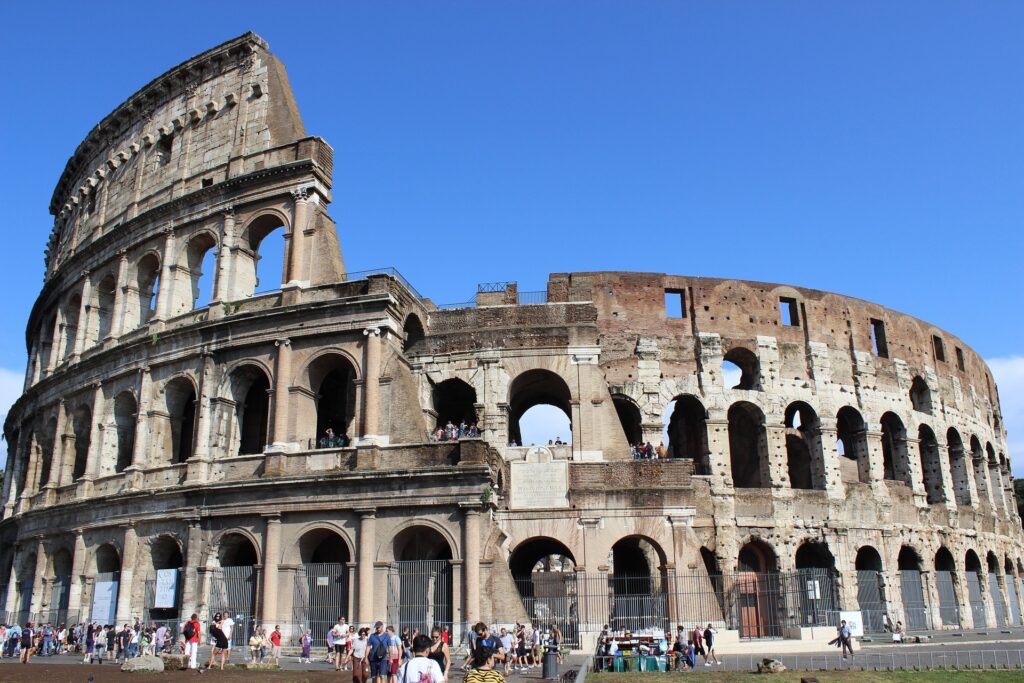
Colosseum Image by lolsanches from Pixabay
The Colosseum is an elliptical-shaped structure that could hold up to 50,000 spectators. It was primarily used for gladiatorial contests and public spectacles such as animal hunts, mock sea battles, and other entertainments. The building stands at 48 meters high and is made up of four stories.

Image by dozemode from Pixabay
Today, the Colosseum is one of the most iconic landmarks in Rome and a popular tourist destination. Visitors can take guided tours of the amphitheatre and learn about its fascinating history. The Colosseum is also a UNESCO World Heritage Site and one of the most recognizable symbols of ancient Rome.
In the afternoon, you can head to the nearby Roman Forum and Palatine Hill, two ancient historical sites, which offer stunning views of the city and a glimpse into ancient Roman history.

The Roman Forum was the political and commercial center of ancient Rome, and it was the site of important public buildings, such as the Senate House and the Temple of Vesta. It was also the location of many important events in Roman history, including speeches by famous orators, trials, and triumphal processions. Today, the Roman Forum is a popular tourist destination and an important archaeological site.
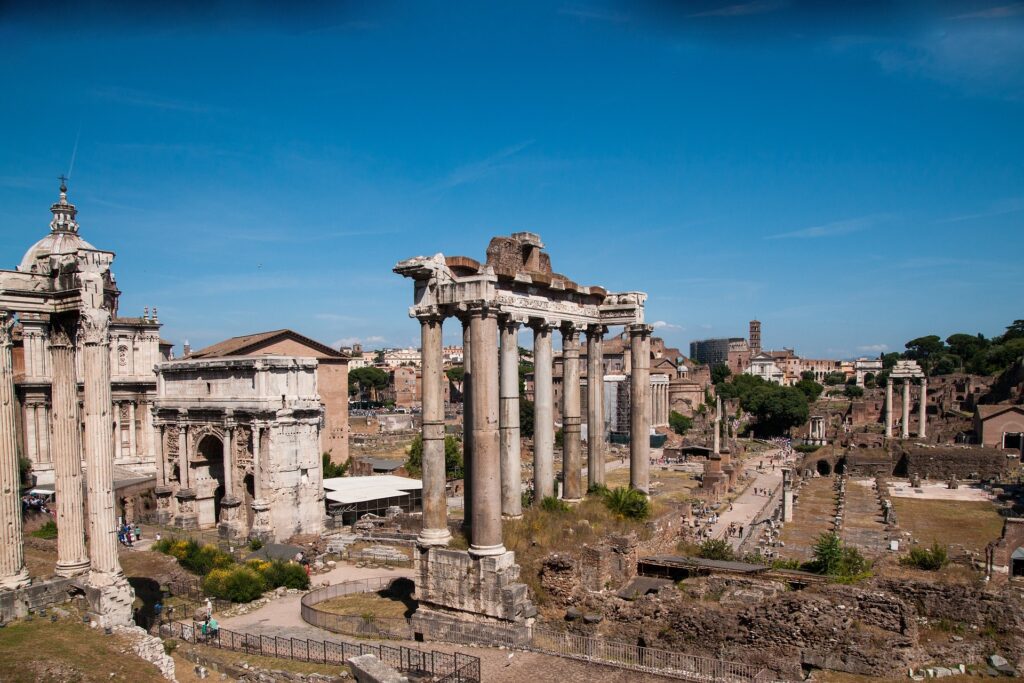
Palatine Hill is located adjacent to the Roman Forum and is one of the seven hills of Rome.
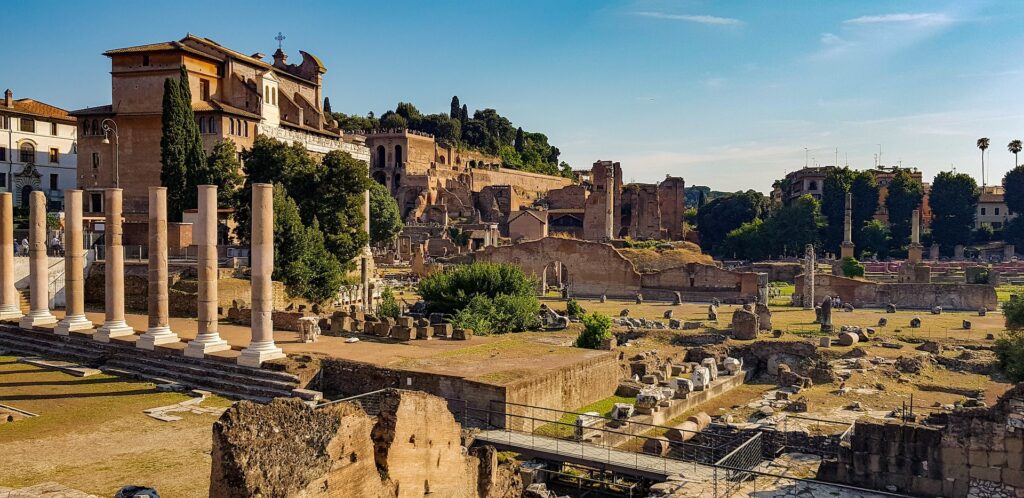
Image by Ben Faist from Pixabay
According to Roman mythology, it is the place where Romulus and Remus were found and raised by the she-wolf. Palatine Hill was also the site of the imperial palace of the Roman emperors and the location of many luxurious villas owned by wealthy Romans. Today, visitors can explore the ruins of these ancient structures and enjoy the panoramic views of the city from the top of the hill.
In the evening, you can stroll around the charming neighborhood of Trastevere, located on the west bank of the Tiber River in Rome. It is known for its narrow cobbled streets, picturesque squares, and historic buildings, and is considered one of the city’s most authentic and lively neighborhoods.
Trastevere has a rich history dating back to ancient Rome, but it is perhaps best known for its medieval and Renaissance architecture. The neighborhood is home to many beautiful churches, including the Basilica of Santa Maria in Trastevere, one of the oldest churches in Rome, as well as the Chiesa di San Francesco a Ripa, which houses Bernini’s famous sculpture, “The Ecstasy of Saint Teresa.”

Image by user32212 from Pixabay
In addition to its historic landmarks, Trastevere is also known for its vibrant nightlife, with many bars, restaurants, and cafes lining the streets and squares. The neighborhood is particularly lively in the evenings, when locals and tourists alike come to enjoy a drink or a meal and soak up the atmosphere of this charming corner of Rome.
Day 2:
Begin your day at the Vatican City and explore the Vatican Museums, which house an impressive collection of art and historical artifacts, including the famous Sistine Chapel. Vatican City is an independent city-state located within the city of Rome, Italy. It is the smallest country in the world, with an area of just 44 hectares and a population of around 800 people.
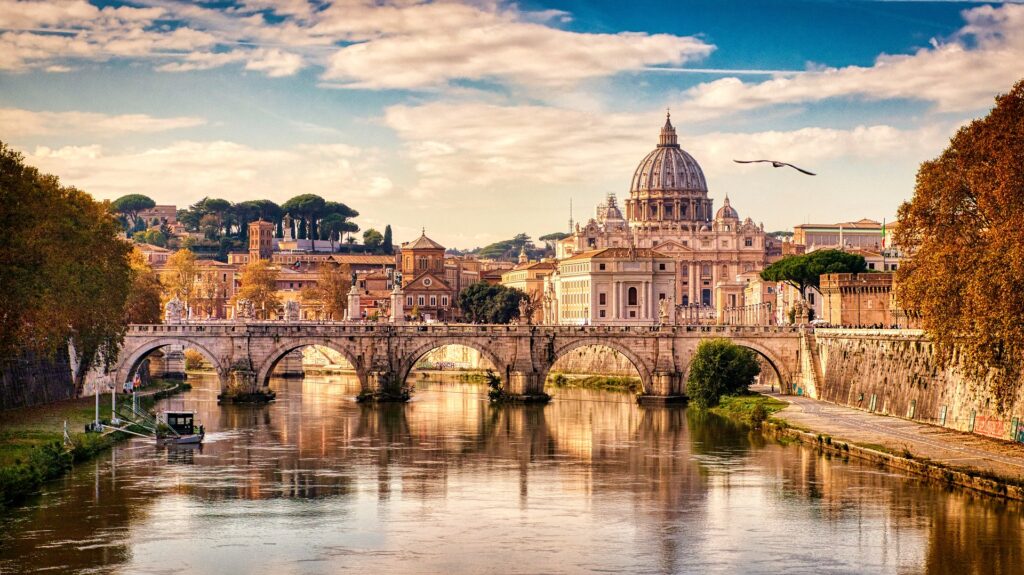
Image by Rainhard Wiesinger from Pixabay
The Vatican is the headquarters of the Roman Catholic Church and the residence of the Pope. The city-state is home to some of the most famous landmarks in Rome, including St. Peter’s Basilica, the Sistine Chapel, and the Vatican Museums. These attractions attract millions of visitors each year and are considered some of the most important and impressive cultural and religious sites in the world.

Image by Bogdan Korneker from Pixabay
Aside from its religious significance, the Vatican is also an important cultural and political institution, with its own government, diplomatic corps, and media outlets. The Vatican has a unique status in international law and maintains diplomatic relations with many countries around the world. It is also home to one of the most extensive art collections in the world, including works by some of the greatest artists in history, such as Michelangelo, Raphael, and Leonardo da Vinci.
Visitors to the Vatican can explore the city-state’s many attractions, attend papal audiences or masses, and learn about the history and significance of this unique and fascinating place.

The Vatican Museums are a collection of museums and galleries located within the Vatican City. They are one of the most important and visited art collections in the world, with millions of visitors each year.
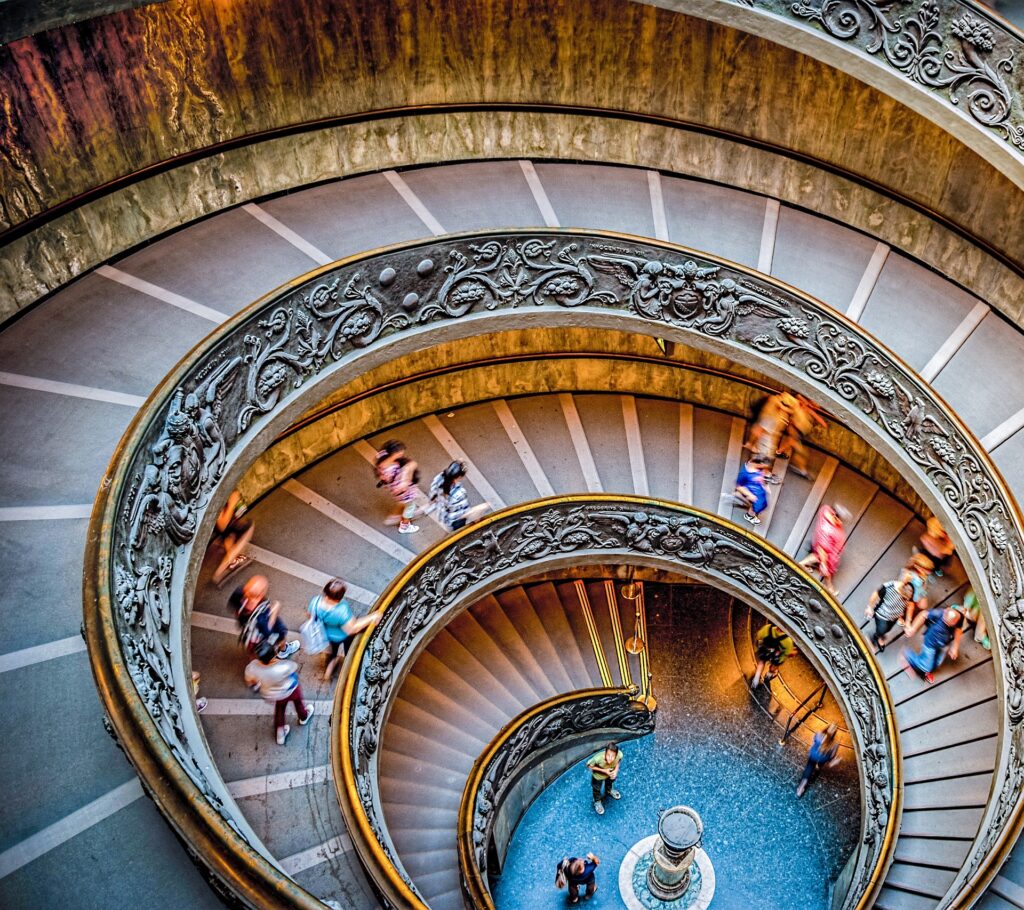
Image by Gary Ullah from Pixabay
The Vatican Museums were founded by Pope Julius II in the early 16th century, and the collection has grown steadily over the centuries. Today, the museums house thousands of works of art and historical artifacts from throughout human history, including ancient Roman and Egyptian sculptures, Renaissance paintings, and medieval tapestries.
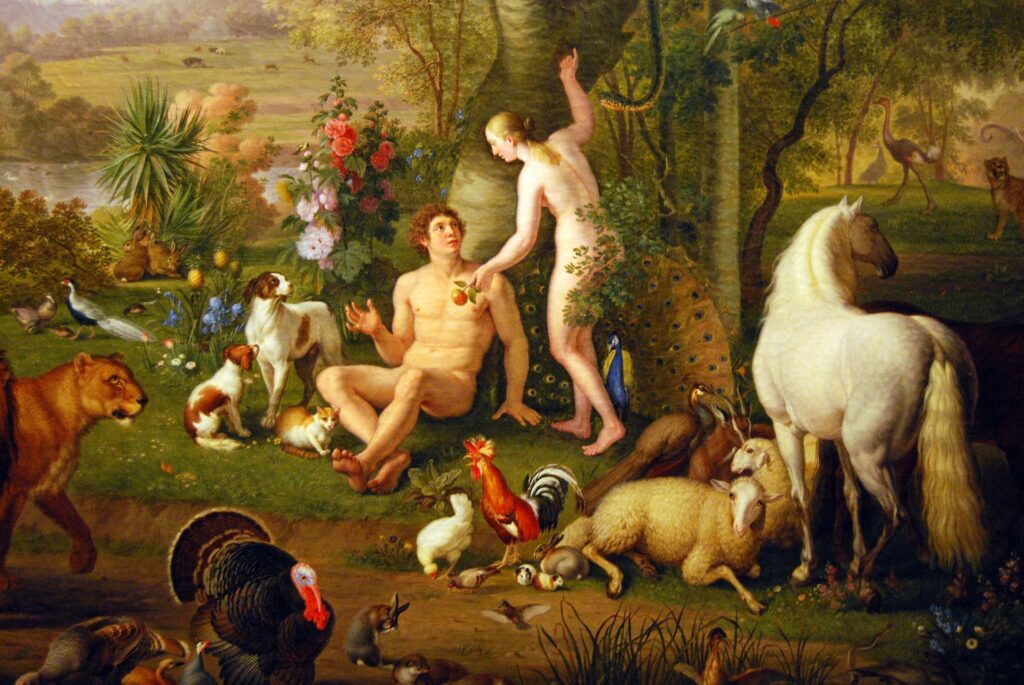
Image by Gianni Crestani from Pixabay
One of the most famous parts of the Vatican Museums is the Sistine Chapel, which is known for its stunning ceiling painted by Michelangelo.
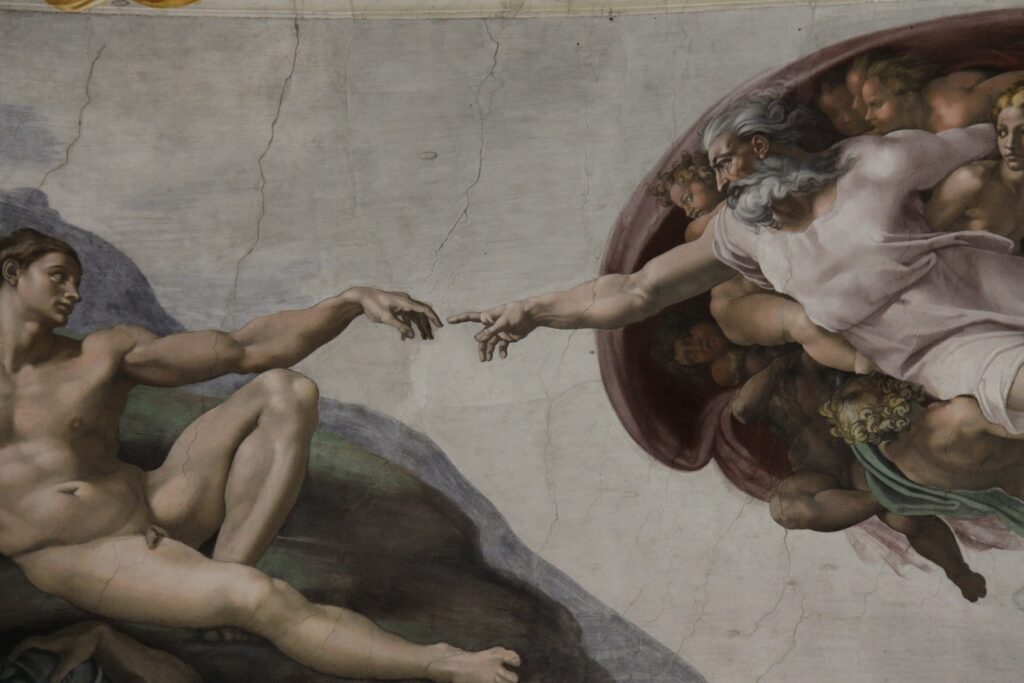
Adan Creation Image by Andres Nassar from Pixabay
The chapel is considered one of the greatest works of art in Western civilization and is a must-see for visitors to the Vatican.
Other highlights of the Vatican Museums include the Raphael Rooms, a series of four rooms decorated by the Renaissance artist Raphael, and the Gallery of Maps, which features a series of 40 maps of Italy painted on the walls and ceiling.
Visitors to the Vatican Museums can spend hours exploring the various galleries and exhibitions, and there is something to interest everyone, from art lovers to history buffs to those interested in the history of the Catholic Church. It is advisable to book tickets in advance to skip the lines and make the most of your time there as the queues can be very long, especially during peak tourist season.
In the afternoon, you can head to the nearby St. Peter’s Basilica, which is considered one of the most important Catholic churches in the world.
The church is named after St. Peter, one of the apostles of Jesus and the first pope of the Catholic Church.
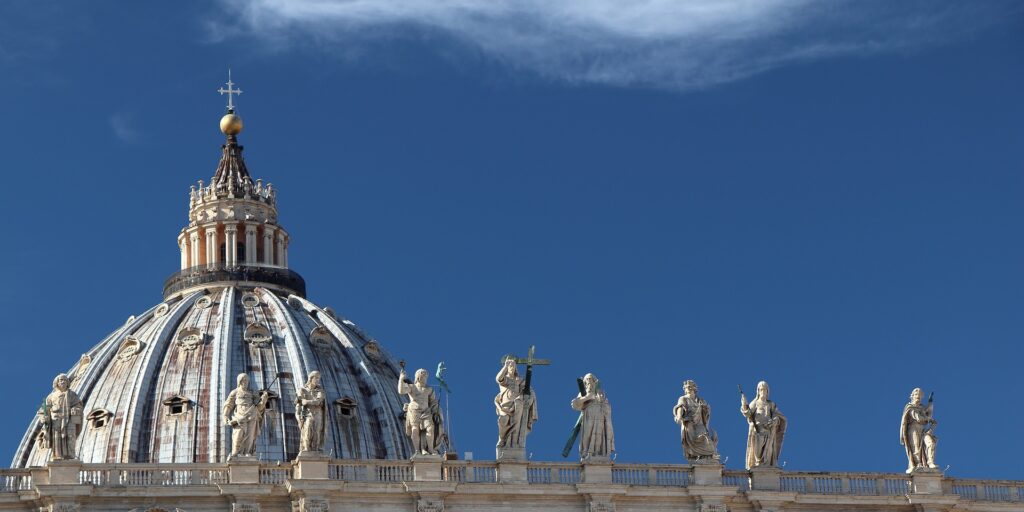
St. Peter’s Basilica Image by Steen Jepsen from Pixabay
The basilica was designed by some of the greatest architects and artists of the Renaissance, including Michelangelo, Bramante, and Bernini, and it took over a century to complete. The result is a stunning example of Renaissance architecture and art, with a vast interior decorated with marble, paintings, sculptures, and mosaics.
One of the most impressive features of St. Peter’s Basilica is its enormous dome, which was designed by Michelangelo and stands over 136 meters tall. Visitors can climb to the top of the dome and enjoy stunning views of Rome and the Vatican City.
Another famous feature of St. Peter’s Basilica is the Pietà, a masterpiece of Renaissance sculpture created by Michelangelo when he was only 24 years old. The sculpture depicts the body of Jesus lying on the lap of his mother, Mary.

Pietà Image by Jacques Savoye from Pixabay
St. Peter’s Basilica is also an important religious site, with many chapels and altars dedicated to different saints and events in the history of the Catholic Church. Visitors can attend Mass or other religious ceremonies, or simply enjoy the beauty and history of this magnificent church.
One of the most notable features of Piazza Navona is its three magnificent fountains. The central fountain, the Fontana dei Quattro Fiumi (Fountain of the Four Rivers), was designed by Gian Lorenzo Bernini and features four large statues representing four major rivers: the Nile, the Danube, the Rio de la Plata, and the Ganges. Another fountain, the Fontana del Moro (Moor Fountain), is located at the southern end of the square and features a central statue of a Moor holding a dolphin.

Image by user32212 from Pixabay
Piazza Navona is also home to several historic buildings, including the Palazzo Pamphilj and the Sant’Agnese in Agone church. The square is a popular destination for tourists and locals alike, and it is known for its lively atmosphere and street performers.
Day 3:
Start your day at the Pantheon, which is one of the most well-preserved ancient Roman buildings in the city. The Pantheon is a magnificent ancient temple located in Rome, Italy. It was built in the year 126 AD by the emperor Hadrian and is one of the best-preserved ancient Roman buildings in the world. The Pantheon was originally built as a temple to all the gods of Rome, but it has been used as a church since the 7th century AD.

Pantheon Image by user32212 from Pixabay
One of the most notable features of the Pantheon is its massive dome, which was the largest dome in the world until modern times. The dome is made of concrete and is over 43 meters in diameter. The top of the dome has a circular opening, called an oculus, which is the only source of natural light inside the building.
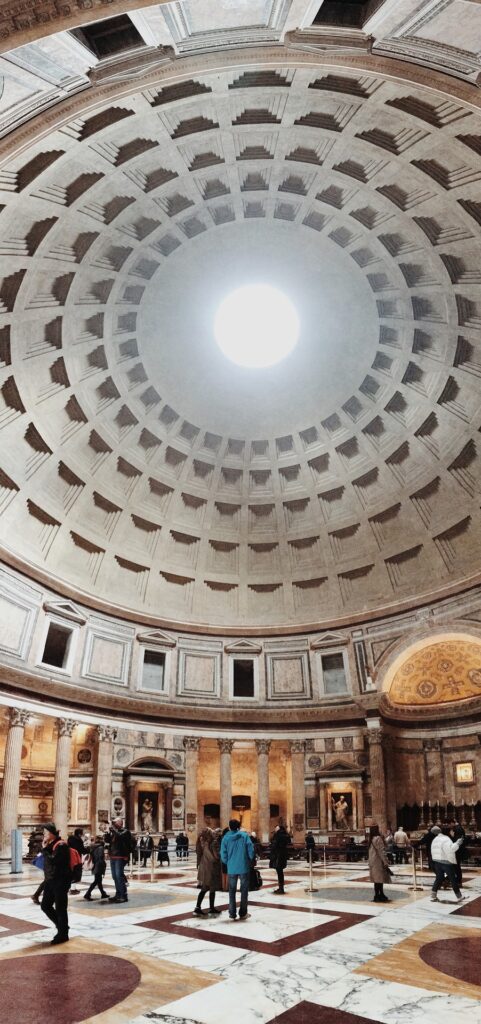
Pantheon Image by Agnė Tamašauskaitė from Pixabay
The interior of the Pantheon is equally impressive, with its massive columns and intricate details. The walls are adorned with marble and decorative motifs, while the floor is made of colorful marble inlaid with geometric designs.
Today, the Pantheon is a popular tourist attraction and is visited by millions of people each year. It is also still used as a church, with regular masses held inside the building. The Pantheon is a testament to the skill and ingenuity of ancient Roman architects and is a must-see destination for anyone visiting Rome.
In the afternoon, you can visit the Trevi Fountain, which is one of the most famous and beautiful fountains in the world. It was designed by Italian architect Nicola Salvi and completed in 1762. The fountain is named after the Trevi district, which was the location of one of the ancient aqueducts that fed water to Rome.
The Trevi Fountain is an impressive work of art and features a large, ornate Baroque-style facade. The central figure of the fountain is the god Neptune, who is riding in a chariot pulled by two sea horses. The chariot is surrounded by Tritons, mythological sea creatures, who are blowing on conch shells. The fountain also features various other figures and decorations, including allegorical representations of Abundance and Health.

Image by www-erzetich-com from Pixabay
One of the most popular traditions associated with the Trevi Fountain is throwing a coin into the water. According to legend, throwing a coin over your shoulder into the fountain will ensure your return to Rome in the future. It is estimated that over 3,000 euros are thrown into the fountain each day, and the money is collected and donated to various charities in Rome.
The Trevi Fountain is a popular tourist destination and is visited by millions of people each year. It has also been featured in many films and other forms of media, cementing its place as an iconic symbol of Rome.
In the evening, you can finish your trip by visiting the Spanish Steps.
The Spanish Steps is a famous landmark in Rome, consisting of a staircase of 135 steps that lead from the Piazza di Spagna at the base to the Trinità dei Monti church at the top. The staircase was built in the early 18th century and is considered one of the most recognizable symbols of Rome.
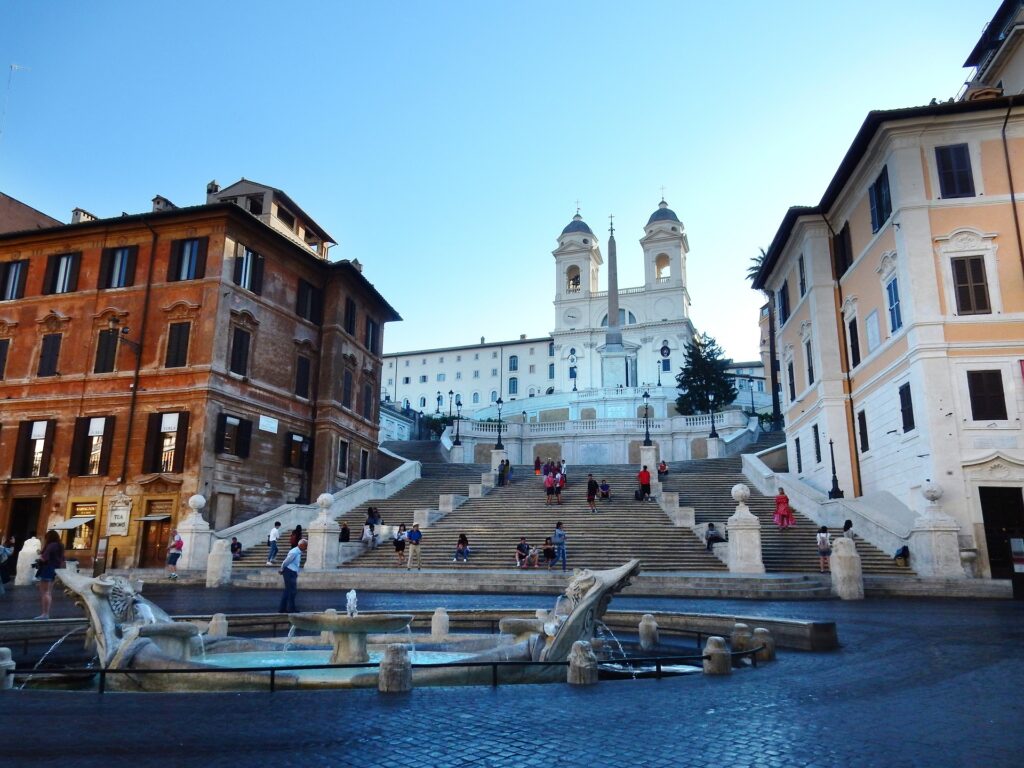
The area surrounding the staircase is filled with high-end shops, restaurants, and cafes. At the base of the steps, visitors can find the Barcaccia Fountain, which was designed by Bernini in the early 17th century.
The Spanish Steps have been the site of many important events in Rome’s history, including political rallies, fashion shows, and religious processions. Today, they remain a popular spot for tourists to take photos and enjoy the sunset and beautiful views of the city from the top of the staircase.
Of course, there are many other amazing things to see and do in Rome, but this itinerary should give you a good introduction to the city’s history, culture, and beauty.


